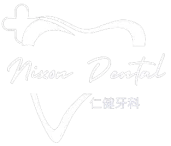Orthodontics
Orthodontic Treatment Prices
Invisalign is available for $45,000
Metal Braces costs $35,000
The cost includes consultation, computer simulation, impressions, X-rays and orthodontic materials.
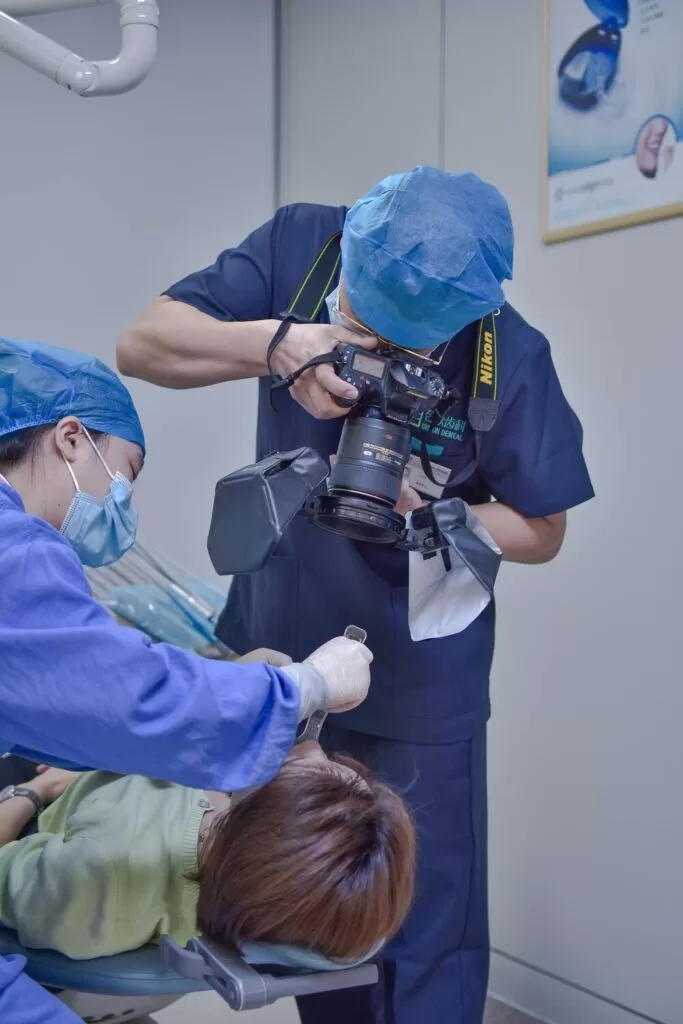
Comprehensive oral examination
Your doctor will first perform a comprehensive oral examination, including tooth decay and preliminary periodontal disease examination, to ensure that other dental problems are not overlooked. The doctor will then take a picture of your mouth and record it.
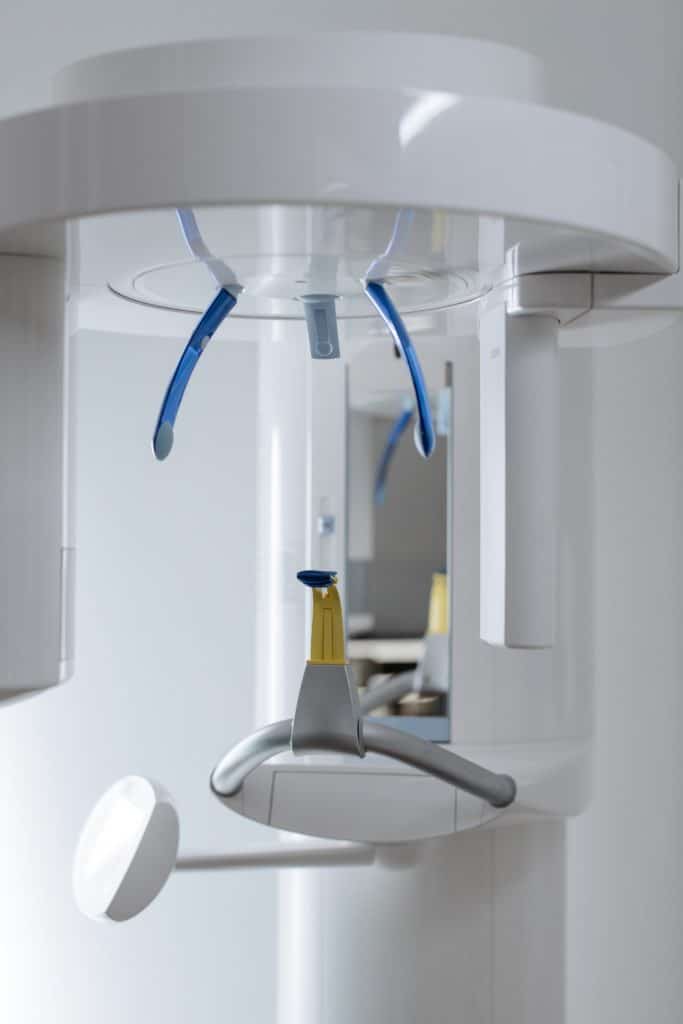
X-rays for braces (Orthopantomogram OPG and Lateral Cephalometric Radiograph)
Full-mouth X-rays (OPGs) and Latera Cephalometric Radiographs are taken for each patient who consults braces to help diagnose the cause of tooth alignment problems and determine treatment options, and lateral X-rays can show the relationship between the cheondes.
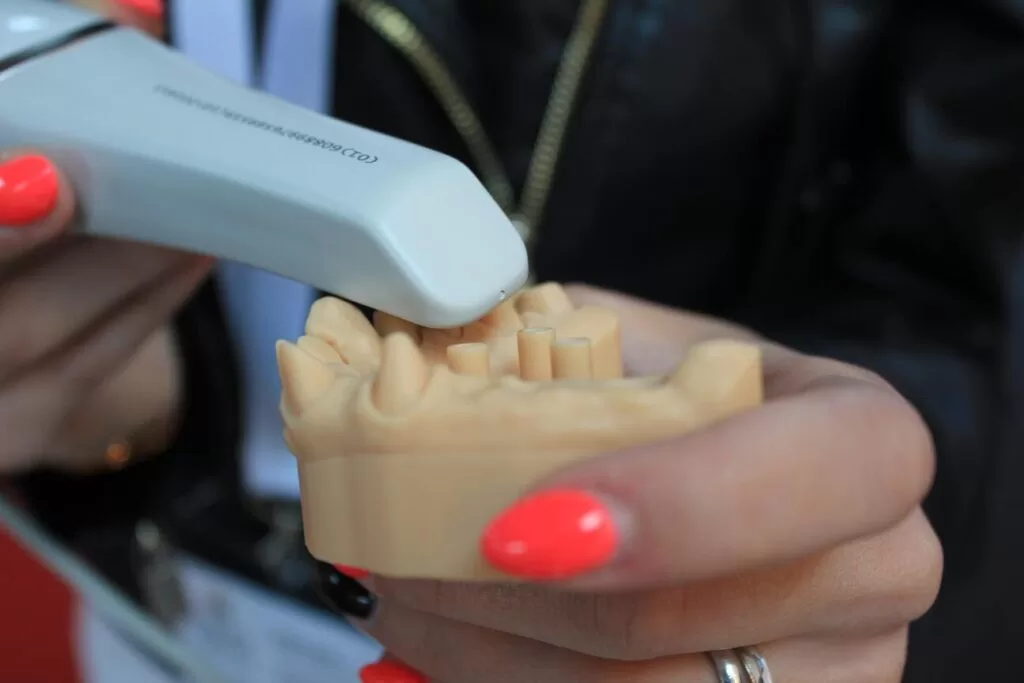
Impressions
In order to make accurate braces diagnosis and formulate treatment plans, the doctor will print a dental mold for the patient, which can more clearly show the problem of tooth alignment. Pre-printed dental molds also allow your doctor to understand your existing occlusal relationship and help him design the right treatment plan for you.
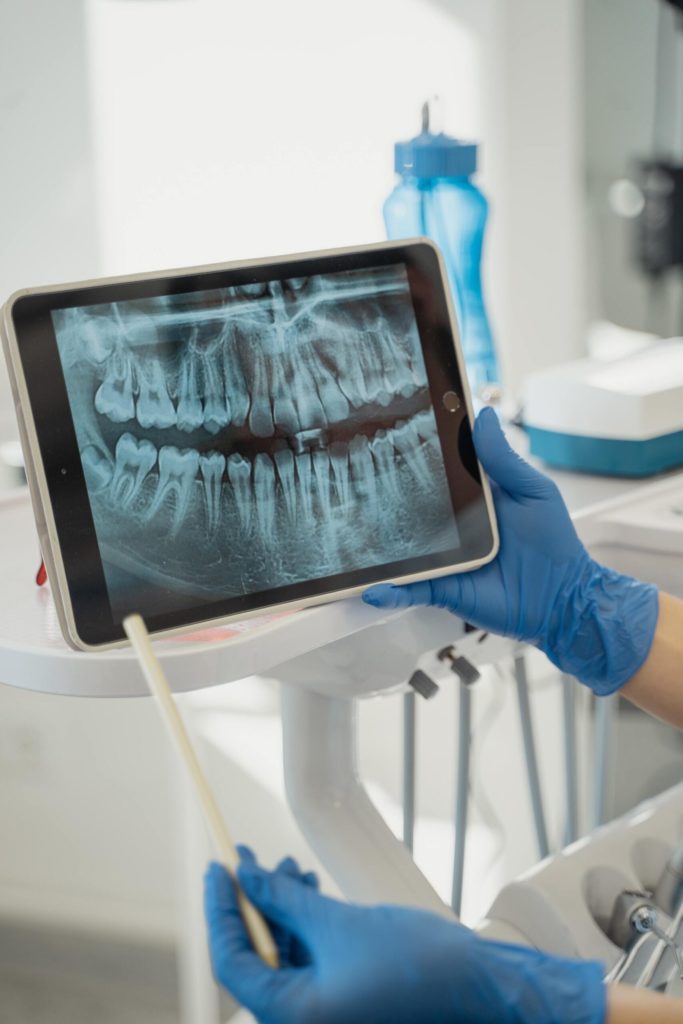
Explain your treatment plan
After completing the above steps, the doctor will formulate one or more treatment plans for you based on the collected photos, X-rays and dental model information, and will explain the quality and specific details of the different options to you to choose.
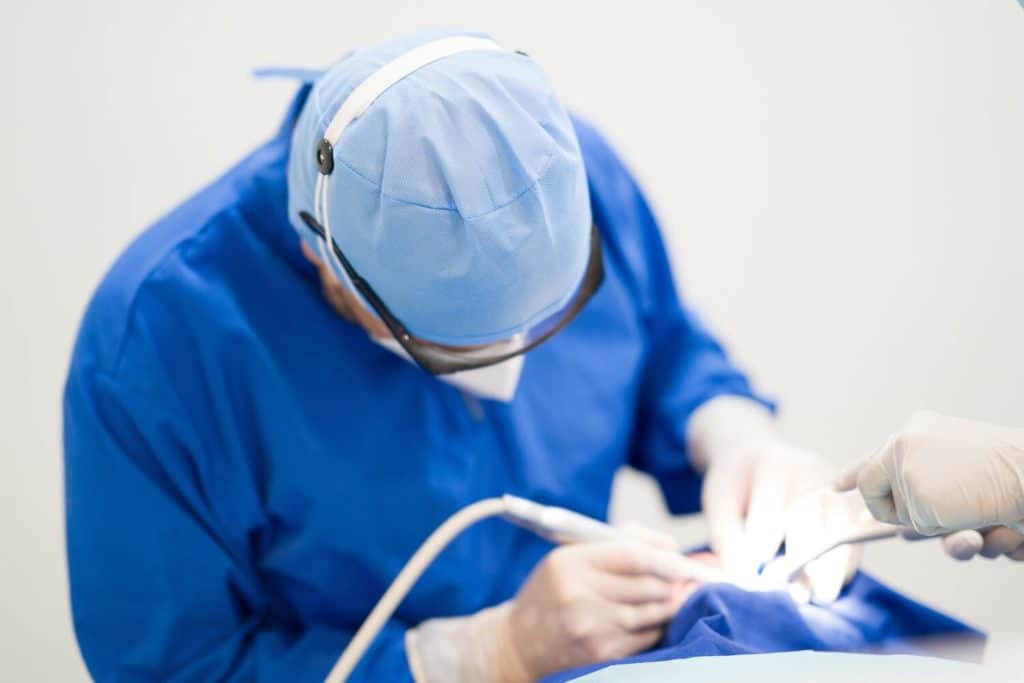
Tooth extraction (if needed)
If your treatment requires tooth extraction, your doctor will usually arrange for you to have two extractions, one on the left and one on the left.
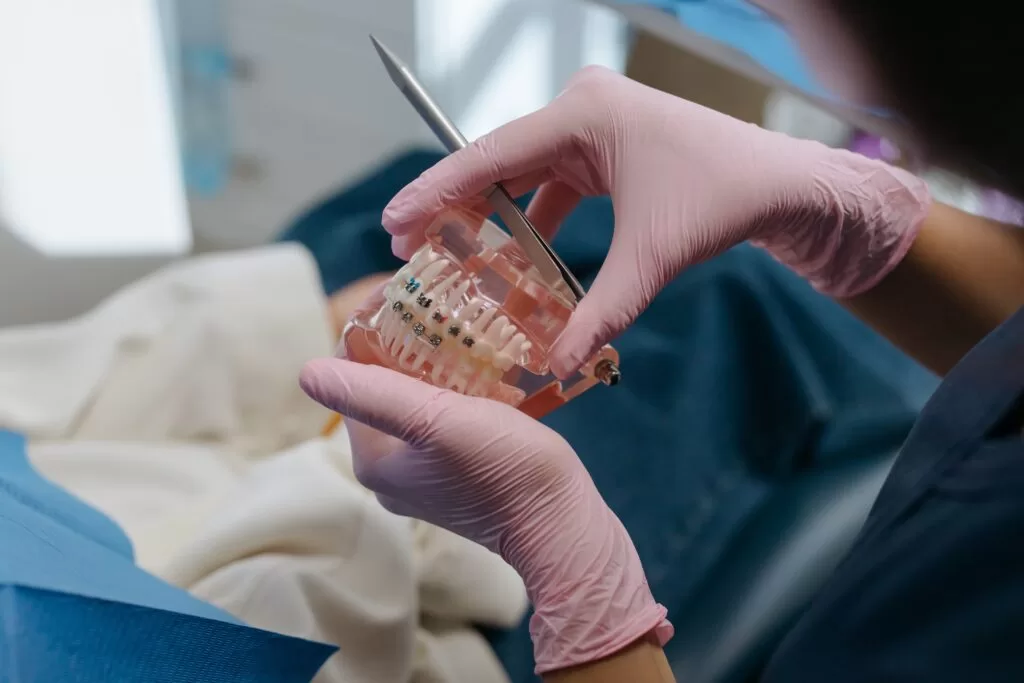
Installation of orthodontic appliances
The next step is to start the formal braces, and if you choose traditional braces, the doctor will put the ferraces and wires on you. In some cases, a blue ring is placed a week before the upper braces to make room for the ring on the molars. If you choose invisible braces, your doctor will give you clear teether.

Follow-up
Every three weeks, you will come back to the clinic for follow-up visits. Each follow-up consultation may result in changing wires, teeth grinding, rubber bands and new clear teethers. Some patients may need bone nails to help move the teeth.
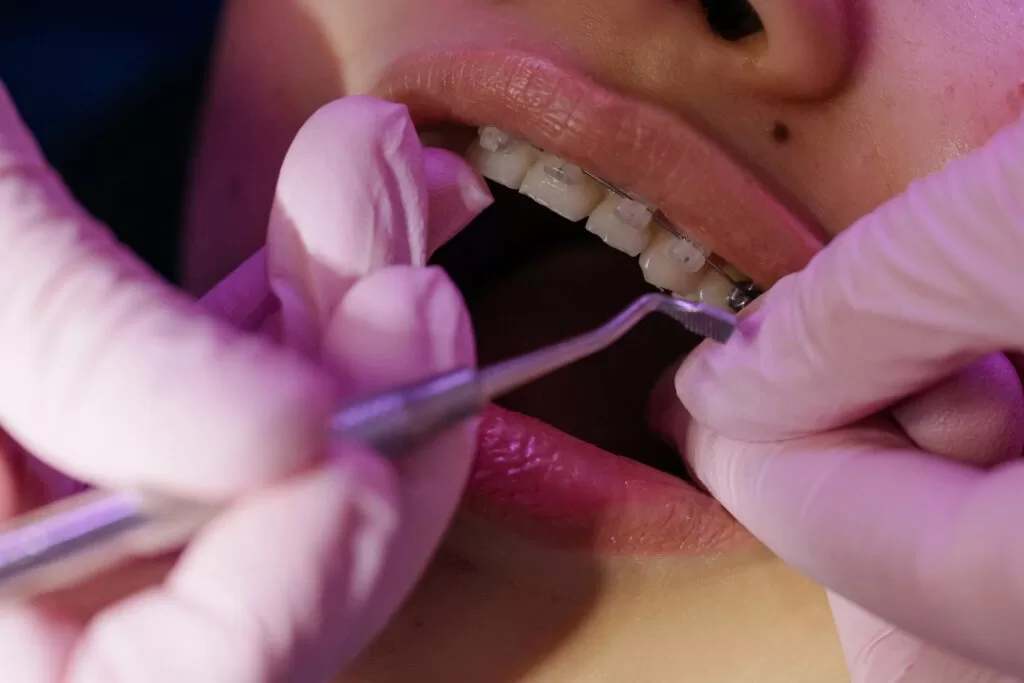
Removing appliance and making retainers
After braces treatment, your doctor will remove the braces and remove the filling material from the surface of your teeth, and then make you a retainer for you to wear.
What is orthodontic treatment?
Orthodontics (commonly known as braces) is recommended as a way to improve the appearance of your teeth. Orthodontics is the process of applying proper pressure to all teeth to straighten your teeth. It can also help take care of the long-term health of teeth, gums, and jawbones.
Why Orthodontic Treatment?
Orthodontics (braces) can help improve grooming by aligning teeth or adjusting them to a better position. Orthodontics in this way can improve the appearance and bite of teeth, while making them easier to clean, keeping teeth clean and oral hygiene, which is the benefit of braces.
For example, some people have protruding lower row tooth lotions (so-called inverted teeth) and do not look very aesthetically pleasing. These protruding teeth are more likely to be damaged, but if orthodontic techniques are employed, they can restore the teeth to their original shape. Otherwise, the way the upper and lower jaws converge may cause the teeth to look unsightly and lead to an incorrect bite. These problems can be corrected by braces, which can restore a confident smile.
Braces are required for orthodontics if you have the following dental problems:
- The teeth are overcrowded and appear uneven
- The gaps between the teeth are too large
- The upper and lower teeth overlap excessively
- The upper anterior teeth are behind the lower teeth (commonly known as inverted teeth)
- Uneven or misaligned teeth
Examination and preparation before orthodontics:
1. Dental check-up
Your dentist will examine your teeth and jaw in detail to see how you are doing, and then assess your suitability for specialist orthodontic treatment.
2. Take X-rays
To get a clear idea of where your teeth are in the gums, your dentist will give you an X-ray. One of the most common is a panoramic dental X-ray, which clearly shows where all the upper and lower teeth bite and shows if any teeth are still developing or failing to grow in the jaw. Some special X-ray technology, such as 3D CT, can scan the body image in real time, in addition to determining the size and position of the jaw and teeth, it can also detect tooth decay, and the examination is quite comprehensive.
3. Teeth bite
In this method, the dentist will let you bite the soft substance, and after a few minutes, it will become your tooth bite, and the dentist will evaluate your condition against the tooth bite. Different techniques have now scanned this clenible mold into digital format for further evaluation of treatment.
4. Take pictures
Your dentist will take pictures of your teeth, bite and sides to provide a detailed and comprehensive analysis of your tooth alignment and occlusion.
5. Tooth extraction (if needed)
If your existing teeth don’t have enough space between each other, your dentist may recommend that you remove one or more teeth to give them the right space to adjust their positions so that braces go more smoothly.
6. Upper hoops
When the treatment plan has been set and the tooth has been extracted, the doctor can start orthodontic treatment for you to perform braces, and invisible braces that have become popular in recent years are also used by many people for braces.
Types of braces
Regarding the types of braces holders, there are four main types:
- Metal braces
- Self-ligating braces
- Ceramic braces
- Invisible braces
Invisible braces are a type of braces that have attracted a lot of attention recently, tailored for the public. Invisible braces look like a mouth guard and can be used to adjust teeth. These invisible braces are more comfortable to wear than traditional braces and can be removed at any time. With this invisible braces, you can not only change your eating habits, but also have a corrective effect. You can also take off this invisible braces and brush and floss your teeth normally. Since invisible braces are not made of metal, it is safer to use invisible braces in principle without causing oral damage during treatment.
Nixon Dental's Expertise in Braces and Invisalign Go/Invisalign Lite
At Nixon Dental, our commitment to crafting beautiful smiles extends to our expertise in traditional braces HK and being your premier “Invisalign dentist” for Invisalign Go/Invisalign Lite. The transformative journey of orthodontic treatment goes beyond mere aesthetics; it’s a path toward a confident and radiant smile that positively influences oral health and overall well-being.
Orthodontic Treatment: A Path to Confidence:
Orthodontic treatment plays a crucial role in enhancing both oral health and aesthetics. Beyond the alignment of teeth, it contributes to improved bite functionality, speech clarity, and overall oral well-being. A confident smile goes beyond appearances, influencing self-esteem and social interactions positively.
Invisalign Go/Invisalign Lite: Redefining Orthodontic Treatment:
Invisalign Go/Invisalign Lite stands as a revolutionary approach to orthodontics, offering a discreet and comfortable alternative to traditional braces HK. Nixon Dental’s as your trusted “Invisalign dentist” expertise in being your “Invisalign dentist” spans both Invisalign Go and Invisalign Lite, providing patients with flexibility and convenience in their journey toward a straighter smile. The custom-made aligners ensure a snug fit, facilitating gradual and precise movement of teeth.
Choosing the Right Path for Your Smile:
The decision between traditional braces HK and Invisalign Go/Invisalign Lite depends on various factors. Nixon Dental’s as your trusted “Invisalign dentist” personalized consultations guide patients in making informed choices based on their preferences, lifestyle, and orthodontic needs. We believe in empowering our patients to actively participate in their treatment decisions.
Understanding Orthodontic Treatment: A Comprehensive Exploration
Orthodontic treatment is a transformative journey that goes beyond aesthetics, influencing oral health and overall well-being. This guide aims to deepen your understanding of orthodontic treatment, focusing on the definition and types of traditional braces HK, the advantages and considerations of choosing traditional braces HK, and the innovative solution of Invisalign Go/Invisalign Lite.
Definition and Types of Traditional Braces:
Traditional braces HK have been a cornerstone of orthodontic treatment for decades, effectively correcting misalignments and enhancing oral function. They consist of metal brackets affixed to each tooth, connected by wires. Over time, advances in technology have led to variations in traditional braces HK, including:
Metal Braces:
The classic and most common type, comprising stainless steel brackets and wires. They are durable, effective, and more affordable than some alternatives.
Ceramic Braces:
These braces HK use tooth-colored or clear ceramic brackets, making them less noticeable. They are popular among individuals seeking a more discreet option.
Lingual Braces:
Placed on the back of teeth, lingual braces are virtually invisible from the front. They provide effective treatment while maintaining a discreet appearance.
Advantages of Choosing Traditional Braces:
Traditional braces offer several advantages that contribute to their enduring popularity in orthodontic treatment:
Effectiveness:
Placed on the back of teeth, lingual braces are virtually invisible from the front. They provide effective treatment while maintaining a discreet appearance.
Durability:
Metal braces are robust and durable, providing a reliable solution for long-term orthodontic treatment.
Cost-Effectiveness:
Traditional braces are often more affordable than some alternative options, making them accessible to a broader range of patients.
Customization:
Various types of traditional braces allow for customization based on individual preferences and treatment needs.
Considerations for Choosing Traditional Braces:
While traditional braces offer numerous benefits, there are considerations to keep in mind when opting for this orthodontic method:
Visibility:
The visibility of metal braces HK may be a concern for some individuals, especially those seeking a more discreet option.
Oral Hygiene:
Proper oral hygiene is crucial with traditional braces HK to prevent issues such as plaque buildup and tooth decay.
Adjustment Period:
Patients may experience an adjustment period with some discomfort and changes in speech initially.
Invisalign Go/Lite: A Modern Approach to Orthodontic Treatment:
Invisalign Go/Invisalign Lite represents an innovative and discreet alternative to traditional braces HK. This clear aligner system is designed to address various orthodontic issues with a focus on flexibility and aesthetics.
Key Features of Invisalign Go/Invisalign Lite:
Clear Aligners:
Invisalign Go/Invisalign Lite employs clear, custom-made aligners that are virtually invisible when worn, addressing concerns about the visibility of orthodontic treatment.
Removability:
Aligners are removable, allowing for easy cleaning of both the aligners and teeth. This feature enhances oral hygiene and reduces the risk of issues associated with fixed braces HK.
Comfort:
Invisalign aligners are made from smooth, comfortable material, eliminating the discomfort often associated with metal braces HK.
Flexibility:
Invisalign Go/Lite is suitable for a variety of orthodontic cases, providing a flexible solution for different treatment needs.
Advantages of Invisalign Go/Lite:
Aesthetic Appeal:
The clear aligners make Invisalign Go/Lite an aesthetically appealing option, especially for those conscious about the visibility of traditional braces HK.
Removability and Convenience:
The ability to remove the aligners for eating and oral care offers convenience and flexibility in daily life.
Predictable Results:
Invisalign treatment involves precise planning, allowing for predictable results and efficient progress tracking.
Comfortable Experience:
The absence of wires and brackets enhances the overall comfort of the orthodontic experience.
Considerations for Choosing Invisalign Go/Invisalign Lite:
While Invisalign Go/Invisalign Lite offers a range of benefits, there are considerations to ponder before opting for this orthodontic method:
Considerations for Choosing Invisalign Go/Invisalign Lite:
While Invisalign Go/Invisalign Lite offers a range of benefits, there are considerations to ponder before opting for this orthodontic method:
Compliance:
Successful Invisalign treatment relies on patient compliance, as aligners must be worn for the recommended duration each day.
Treatment Duration:
The treatment duration with Invisalign may vary, and patient commitment is crucial for achieving optimal results.
Invisalign Go vs. Invisalign Lite: Navigating the Choices in Clear Orthodontic Solutions
The world of orthodontics has witnessed a transformative shift with the introduction of advanced clear aligner systems like Invisalign Go and Invisalign Lite. This guide embarks on a detailed exploration of the distinctions between Invisalign Go and Invisalign Lite, offering valuable insights for individuals seeking a discreet and effective orthodontic solution.
Invisalign Go
Invisalign Go is designed for individuals with mild to moderate orthodontic concerns. This clear aligner system is particularly focused on addressing issues such as spacing, mild misalignments, and crowding. The treatment involves a series of custom-made clear aligners that gradually shift the teeth into their desired positions.
Invisalign Lite:
Invisalign Lite, on the other hand, extends its reach to individuals with slightly more complex orthodontic needs. It is suitable for cases involving moderate crowding and spacing, offering a more comprehensive approach compared to Invisalign Go. Like Invisalign Go, Invisalign Lite utilizes a series of clear aligners for treatment.
Comparative Analysis: Invisalign Go vs. Invisalign Lite:
Orthodontic Complexity:
Invisalign Go: Primarily designed for mild to moderate cases, Invisalign Go is adept at addressing minor misalignments and spacing issues.
Invisalign Lite: Geared towards a slightly higher level of complexity, Invisalign Lite can effectively tackle moderate crowding and spacing concerns.
Treatment Duration:
Invisalign Go: Generally, Invisalign Go offers a shorter treatment duration, making it an attractive option for those seeking swift results.
Invisalign Lite: Due to its more comprehensive approach, Invisalign Lite may have a slightly longer treatment duration, accommodating the additional complexities of certain cases.
Number of Aligners:
Invisalign Go: In simpler cases, Invisalign Go may require fewer aligners throughout the treatment process.
Invisalign Lite: Given its focus on more complex cases, Invisalign Lite typically involves a higher number of aligners to achieve the desired results.
Suitable Cases:
Invisalign Go: Ideal for individuals with mild to moderate spacing, crowding, or misalignment concerns who are looking for a discreet and efficient solution.
Invisalign Lite: Suited for those with moderate orthodontic issues, providing a more comprehensive treatment option for cases that extend beyond the scope of Invisalign Go.
Determining Suitable Candidates for Invisalign Go/Invisalign Lite:
Mild to Moderate Orthodontic Concerns:
Both Invisalign Go and Invisalign Lite are most suitable for individuals with mild to moderate orthodontic issues. This includes cases of mild crowding, spacing, and minor misalignments.
Preference for Discreet Treatment:
Individuals who prioritize a discreet and virtually invisible orthodontic solution often find both Invisalign Go and Invisalign Lite appealing. The clear aligners offer an aesthetic advantage over traditional braces.
Commitment to Treatment Plan:
Successful Invisalign treatment relies on patient compliance. Candidates for Invisalign Go/Invisalign Lite should be committed to wearing the aligners as instructed by their orthodontist for optimal results.
Budget Considerations:
While both options provide an excellent alternative to traditional braces, individuals may consider their budget when choosing between Invisalign Go and Invisalign Lite. In some cases, the complexity of the treatment may influence the overall Invisalign cost.
Consultation with Orthodontic Professional:
The best way to determine eligibility for Invisalign Go or Invisalign Lite is through a comprehensive consultation with an experienced orthodontic professional. A thorough examination allows the orthodontist to assess the individual’s specific needs and recommend the most suitable option.
Choosing Between Braces and Invisalign: A Personalized Approach to Orthodontic Decisions
Embarking on the journey to a straighter, more confident smile often involves a critical decision: choosing between traditional braces and Invisalign. This guide navigates the factors that influence this choice and emphasizes the importance of personalized consultations at Nixon Dental as your trusted “Invisalign dentist” in determining the most suitable orthodontic treatment.
Factors Influencing the Choice Between Braces and Invisalign:
1. Orthodontic Complexity:
Braces: Traditional braces excel in addressing a wide range of orthodontic concerns, from mild to severe misalignments, crowding, and spacing.
Invisalign: While highly effective, Invisalign is typically recommended for mild to moderate orthodontic issues, such as mild misalignments and spacing.
2. Aesthetic Preferences:
Braces: Braces are characterized by metal brackets and wires, which may be visible when smiling or talking. Some individuals appreciate the traditional appearance of braces.
Invisalign: Invisalign offers a virtually invisible solution with clear aligners that go unnoticed during daily activities. It appeals to those seeking a discreet orthodontic option.
3. Comfort and Convenience:
Braces: Traditional braces may cause some initial discomfort and may require adjustments. There is also a learning curve related to maintaining oral hygiene with braces.
Invisalign: Invisalign aligners are smooth and comfortable, causing minimal irritation. They are easily removable for meals, ensuring no dietary restrictions, and facilitating optimal oral care.
4. Treatment Duration:
Braces: Treatment duration with braces may vary, often ranging from 18 months to several years, depending on the complexity of the case.
Invisalign: Invisalign treatment typically has a shorter duration, often ranging from 12 to 18 months for mild to moderate cases.
5. Patient Compliance:
Braces: Braces are fixed on the teeth, eliminating the need for patient compliance. However, regular orthodontic appointments for adjustments are essential.
Invisalign: Successful Invisalign treatment relies on consistent patient compliance. Aligners must be worn for the recommended duration each day for optimal results.
6. Budget Considerations:
Braces: Traditional braces are often more cost-effective compared to Invisalign. They may be a preferred choice for individuals with budget constraints.
Invisalign: Invisalign treatment may have a higher upfront Invisalign cost, influenced by factors such as the complexity of the case and treatment duration.
7. Maintenance and Oral Hygiene:
Braces: Proper oral hygiene with braces requires additional effort due to the presence of brackets and wires. Specialized tools may be needed for thorough cleaning.
Invisalign: Invisalign aligners are easily removable, allowing for regular brushing and flossing without hindrance. This contributes to better oral hygiene during treatment.
Personalized Consultations at Nixon Dental as Your Trusted "Invisalign Dentist"
At Nixon Dental as your trusted “Invisalign dentist”, we recognize that every smile is unique, and the decision between braces and Invisalign should be tailored to individual needs. Our personalized consultations play a pivotal role in guiding patients toward the most suitable orthodontic treatment.
1. Comprehensive Examination:
Our experienced orthodontists conduct a thorough examination to assess the current state of oral health, the complexity of orthodontic issues, and the patient’s overall dental condition.
2. Discussion of Treatment Goals:
We engage in open and collaborative discussions with patients to understand their treatment goals, preferences, and lifestyle considerations. This dialogue ensures that the chosen treatment aligns with the patient’s expectations.
3. Educational Guidance:
Our team provides detailed information about both braces and Invisalign, explaining the pros and cons of each option. This educational approach empowers patients to make informed decisions about their orthodontic journey.
4. Digital Imaging and Treatment Simulation:
Using advanced digital imaging and treatment simulation, we offer a glimpse into the potential outcomes of both braces and Invisalign. This visual representation helps patients envision the transformation of their smiles.
5. Customized Treatment Plans:
Based on the assessment and discussions, we craft customized treatment plans that align with the individual’s unique needs, preferences, and lifestyle.
Orthodontic Treatment Procedure: A Guided Journey to a Confident Smile
Embarking on orthodontic treatment procedure is a transformative journey toward achieving a straighter and more confident smile. This guide provides a comprehensive step-by-step breakdown of the orthodontic treatment procedure, offering insights into the initial consultations, diagnostic assessments, and the pivotal role of digital impressions and 3D imaging in creating personalized treatment plans.
Step 1: Initial Consultation and Assessment:
The orthodontic treatment procedure journey commences with an initial consultation, where patients have the opportunity to express their concerns, aspirations, and expectations for their smiles. During this session, experienced orthodontic treatment procedure at Nixon Dental as your trusted “Invisalign dentist” engage in open dialogue to understand the unique needs of each patient.
Discussion of Treatment Goals:
Patients discuss their desired outcomes and treatment goals with the orthodontist. Orthodontic treatment procedure may include addressing issues such as misalignments, crowding, spacing, or other orthodontic concerns.
Clinical Examination:
A thorough clinical examination is conducted to assess the current state of the patient’s oral health. This orthodontic treatment procedure involves evaluating the alignment of teeth, the bite, and other factors influencing orthodontic treatment.
X-rays and Imaging:
In some cases, X-rays and traditional imaging may be used to capture detailed images of the teeth and jaw structure. This aids in identifying underlying issues that may not be visible during a clinical examination.
Step 2: Diagnostic Assessments and Treatment Planning:
Following the initial orthodontic treatment procedure consultation , a series of diagnostic assessments are performed to gather detailed information about the patient’s dental anatomy. This phase plays a crucial role in formulating a personalized and effective treatment plan.
Digital Impressions:
Digital impressions have revolutionized orthodontic diagnostics, replacing traditional molds with advanced digital scanning technology. This process involves using a handheld scanner to capture a detailed 3D model of the patient’s teeth.
3D Imaging:
3D imaging technology provides a comprehensive view of the patient’s dental structure. It allows orthodontists to analyze the relationship between teeth, jaw, and facial features with precision.
Treatment Simulation:
Utilizing the digital impressions and 3D imaging, orthodontists can simulate the expected outcomes of different treatment approaches. This enables patients to visualize the potential changes to their smiles before the actual treatment begins.
Customized Treatment Plan:
Based on the diagnostic assessments and treatment simulations, orthodontists develop a customized treatment plan tailored to the specific needs and goals of each patient. This plan outlines the recommended orthodontic appliances, treatment duration, and anticipated outcomes.
Step 3: Commencement of Orthodontic Treatment:
Braces:
Traditional braces, consisting of metal brackets and wires, are a longstanding and effective orthodontic option. Braces are suitable for a wide range of cases, including those with severe misalignments and complex orthodontic issues.
Invisalign:
Invisalign, a clear aligner system, is a popular choice for individuals seeking a discreet and removable orthodontic solution. It is well-suited for mild to moderate cases and offers a more aesthetically pleasing alternative to traditional braces.
Step 4: Monitoring and Adjustments:
Throughout the orthodontic treatment, regular monitoring and adjustments are essential to ensure progress and address any emerging concerns. Patients attend follow-up appointments where orthodontists make necessary modifications to the appliances.
Adjustments for Braces
Braces may require periodic adjustments, where orthodontists tighten wires or replace elastics. These adjustments guide the teeth into their desired positions over the course of the treatment.
Progress Checks for Invisalign:
In the case of Invisalign, patients receive a series of aligners to be changed at specified intervals. Progress checks allow orthodontists to assess the alignment progress and provide the next set of aligners.
Step 5: Completion of Treatment and Retention:
Upon achieving the desired alignment and completing the orthodontic treatment, the next phase involves retention to maintain the results. This typically involves the use of retainers to prevent the teeth from shifting back to their original positions.
Retainers:
Retainers are custom-made appliances designed to keep the teeth in their newly aligned positions. Patients wear retainers as prescribed by the orthodontist to ensure the longevity of the results.
The Role of Digital Impressions and 3D Imaging:
The integration of digital impressions and 3D imaging technology has significantly enhanced the orthodontic treatment procedure, offering several advantages:
Precision and Accuracy:
Digital impressions provide a highly accurate representation of the patient’s dental anatomy, allowing orthodontists to plan treatments with precision.
Comfortable Experience:
Digital impressions eliminate the need for traditional molds, offering a more comfortable and efficient experience for patients.
Treatment Visualization:
3D imaging allows orthodontists to visualize the expected outcomes of different treatment approaches. This aids in treatment planning and enables patients to have a clear understanding of the anticipated changes.
Efficient Treatment Planning:
The digital workflow facilitated by digital impressions and 3D imaging streamlines treatment planning, leading to more efficient and effective orthodontic care.
Navigating Orthodontic Treatment Costs: Traditional Braces Unveiled
Navigate to the journey to a straighter smile involves careful consideration of orthodontic treatment costs. In this orthodontic treatment cost guide, we explore the financial aspects of traditional braces, providing a transparent breakdown of orthodontic treatment cost and addressing special considerations for different types of braces.
Traditional Orthodontics Costs: Unveiling the Investment
When it comes to traditional orthodontic treatment with braces, the typical orthodontic treatment cost ranges from $25,000 to $40,000, with an average orthodontic treatment cost of approximately $35,000. It’s important to note that these figures can vary based on factors such as geographic location, the complexity of the case, and the orthodontic provider’s expertise.
Transparent Breakdown of Costs: Traditional Braces Unveiled
Understanding the components of the total orthodontic treatment cost of traditional braces helps individuals make informed decisions about their orthodontic journey. The following provides a transparent breakdown of costs associated with traditional braces:
Orthodontic Consultation:
Before initiating treatment, an orthodontic consultation is necessary. This initial visit involves a clinical examination, discussion of treatment goals, and the development of a customized treatment plan. Consultation fees typically costs $500.
Diagnostic Assessments:
Diagnostic assessments, including X-rays and digital impressions, play a crucial role in treatment planning. These assessments contribute to the overall cost, with X-rays ranging from $25 to $200 and digital impressions averaging around $50 to $150. (Both are already included in the consultation fee already)
Orthodontic Appliances:
The orthodontic treatment cost of traditional braces includes the orthodontic appliances themselves. Traditional braces consist of metal brackets, wires, and bands. The orthodontic treatment cost of these components can vary but are already included in the treatment price.
Installation and Adjustments:
Installation of braces and subsequent adjustments are integral parts of the treatment process. Installation orthodontic treatment and adjustments are typically included in the overall treatment cost.
Orthodontic Appointments:
Regular orthodontic appointments for check-ups and adjustments are essential throughout the treatment duration. These appointments do not incur additional fees.
Retainers:
Upon completion of the active phase of treatment, retainers are prescribed to maintain the alignment of teeth. The cost of retainers is generally included in the overall treatment cost and ranges from $3,000 to $7,000.
Emergency Visits:
In some cases, emergency visits may be necessary to address issues such as broken brackets or wires. The fee has already been included in the treatment fee.
Special Considerations for Different Types of Braces
While traditional metal braces are the most common, advancements in orthodontics have introduced various types of braces to cater to different preferences and needs. Each type comes with its own considerations:
Ceramic Braces:
Ceramic braces are less noticeable than traditional metal braces, making them a popular choice for those seeking a more discreet option. However, they tend to be more expensive, with costs ranging from $32,000-$50,000. It is only availble in specialist clinic.
Lingual Braces:
Lingual braces are placed on the backside of the teeth, providing a virtually invisible treatment option. Due to their customization and placement, lingual braces can be more costly, ranging from $48,000 to $80,000. It is only availble in specialist clinic.
Invisalign:
Invisalign offers a clear aligner system that is removable and virtually invisible. While providing aesthetic advantages, Invisalign may have a higher upfront invisalign cost, $45,000.
Self-Ligating Braces:
Self-ligating braces use a specialized bracket system that eliminates the need for elastic bands. They are often associated with shorter treatment times but may come with a cost around $38,000
Unveiling the Investment: In-Depth Exploration of Invisalign Go/Lite Cost
Invisalign Go/Lite Cost: A Closer Look at the Investment
The cost of Invisalign Go/Lite typically falls within the range of $35,000 to $55,000. The average cost is approximately $45,000. It’s important to note that these figures can vary based on several factors, including geographic location, the complexity of the case, and the specific needs of the individual undergoing treatment.
Factors Influencing Invisalign Go/Lite Cost: A Comprehensive Analysis
Understanding the factors that contribute to the overall cost of Invisalign Go/Lite enables individuals to make informed decisions about their orthodontic investment. The following are key considerations that influence the invisalign cost of this innovative clear aligner system:
Treatment Complexity:
The complexity of the orthodontic case significantly influences the overall cost of Invisalign Go/Lite. Cases that require more extensive adjustments or address complex dental issues may incur higher invisalign cost.
Treatment Duration
The duration of Invisalign treatment varies from case to case. Longer treatment durations may contribute to higher overall invisalign cost. The average treatment time with Invisalign Go/Lite ranges from six to twelve months.
Orthodontic Provider's Expertise:
The experience and expertise of the orthodontic provider play a role in determining the invisalign cost. Established providers with a track record of successful Invisalign treatments may charge higher fees for their services.
Geographic Location:
The cost of living and prevailing economic conditions in a specific geographic location can impact the overall cost of Invisalign Go/Lite. Urban areas and regions with higher living costs may have higher treatment fees.
Inclusions in the Treatment Package:
The components included in the Invisalign Go/Lite treatment package contribute to the overall cost. This may encompass diagnostic assessments, digital impressions, aligners, orthodontic appointments, and post-treatment retainers.
Breaking Down the Invisalign Go/Lite Cost: What's Included?
To demystify the Invisalign Go/Lite cost, let’s break down what is typically included in the overall treatment package:
Orthodontic Consultation:
The initial consultation is a crucial step in the Invisalign Go/Lite journey. During this session, the orthodontist assesses the patient’s dental condition, discusses treatment goals, and outlines the anticipated outcomes.
Diagnostic Assessments:
Invisalign Go/Lite utilizes advanced digital impressions to create a 3D model of the patient’s teeth. This eliminates the need for traditional molds and contributes to a more comfortable diagnostic process.
Aligners:
The cost of Invisalign Go/Lite includes the clear aligners, which are custom-made to gradually shift the teeth into their desired positions. The number of aligners required is determined by the treatment plan.
Orthodontic Appointments:
Regular orthodontic appointments are scheduled throughout the treatment duration to monitor progress, make necessary adjustments, and ensure the aligners are effectively guiding the teeth.
Post-Treatment Retainers:
After completing the active phase of Invisalign Go/Lite treatment, patients are provided with retainers to maintain the alignment achieved. The cost of post-treatment retainers is typically included in the overall package.
Orthodontic Treatment in Hong Kong with Nixon Dental
In the vibrant landscape of Hong Kong, achieving a confident and radiant smile is a journey many embark upon through orthodontic treatment. In this exploration, we provide an overview of the orthodontic landscape in Hong Kong and delve into Nixon Dental’s as your trusted “Invisalign dentist” unwavering commitment to delivering high-quality orthodontic care to the local community.
Orthodontic Treatment in Hong Kong: A Dynamic Landscape
Hong Kong, with its dynamic blend of cultures and lifestyles, is home to a diverse population that values oral health and aesthetics. The orthodontic landscape in this bustling city reflects a growing awareness of the importance of a well-aligned smile and optimal oral health.
Variety of Treatment Options:
Hong Kong boasts a wide array of orthodontic treatment options catering to different preferences and needs. From traditional braces to innovative clear aligner systems like Invisalign, individuals have the opportunity to choose the solution that aligns with their lifestyle and goals.
Emphasis on Aesthetics:
Aesthetic considerations play a significant role in the choices individuals make regarding orthodontic treatment. The desire for discreet and comfortable solutions has led to the popularity of clear aligners, which offer a less conspicuous alternative to traditional braces.
Increased Awareness and Education:
The increasing awareness of the impact of oral health on overall well-being has contributed to a higher demand for orthodontic treatment. Educational initiatives and advancements in technology have empowered individuals to make informed decisions about their orthodontic journey.
Integration of Technology:
Orthodontic treatment HK practices leverage cutting-edge technology for diagnosis, treatment planning, and execution. Digital impressions, 3D imaging, and virtual treatment simulations enhance the precision and effectiveness of orthodontic care.
Cultural Significance:
A confident and radiant smile holds orthodontic treatment HK, where social interactions and professional engagements often place emphasis on one’s oral presentation. Orthodontic treatment HK aligns with cultural values of self-presentation and personal confidence.
Nixon Dental: Elevating Orthodontic Care in the Hong Kong Community
Nixon Dental as your trusted “Invisalign dentist” stands as a beacon of excellence in the realm of Orthodontic treatment HK. Committed to delivering high-quality, patient-centric services, Nixon Dental as your trusted “Invisalign dentist” combines expertise, innovation, and a personalized approach to ensure each individual’s Orthodontic treatment HK journey is transformative and empowering.
Expertise and Experience:
At the heart of Nixon Dental’s as your trusted “Invisalign dentist” commitment is a team of highly skilled orthodontic treatment HK professionals with extensive experience in a diverse range of orthodontic treatments. From traditional braces to the latest advancements in clear aligner systems, the team is well-equipped to address various orthodontic needs.
Comprehensive Consultations:
Nixon Dental as your trusted “Invisalign dentist” begins each orthodontic treatment HK journey with comprehensive consultations. These orthodontic treatment HK sessions involve a detailed examination, discussion of treatment goals, and an exploration of the available options. Patient education is a priority, empowering individuals to actively participate in decisions about their orthodontic care.
Personalized Treatment Plans:
Recognizing the uniqueness of each smile, Nixon Dental as your trusted “Invisalign dentist” designs personalized orthodontic treatment HK plans tailored to individual needs and preferences. Whether the goal is to address misalignments, correct bite issues, or enhance aesthetics, the orthodontic treatment HK plan is a collaborative effort between the patient and the orthodontic team.
Advanced Technology for Precision:
Nixon Dental as your trusted “Invisalign dentist” embraces state-of-the-art technology to enhance the precision and efficiency of orthodontic treatments. Digital impressions, 3D imaging, and virtual treatment simulations contribute to accurate diagnosis and streamlined treatment processes.
Innovative Solutions:
Nixon Dental as your trusted “Invisalign dentist” offers a range of orthodontic solutions, including traditional braces and advanced clear aligner systems like Invisalign Go/Lite. The practice stays at the forefront of orthodontic innovation, providing individuals with choices that align with their preferences and lifestyle.
Patient-Centric Approach:
The patient’s well-being and satisfaction are at the core of Nixon Dental’s as your trusted “Invisalign dentist” philosophy. The practice emphasizes clear communication, ongoing support, and a comfortable environment to ensure a positive and empowering orthodontic experience.
Frequently Asked Questions (FAQ)
Nixon Dental as your trusted “Invisalign dentist” provides a range of treatments, including traditional braces and Invisalign Go/Lite, catering to diverse orthodontic needs.
A comprehensive consultation with our experts helps determine the most suitable treatment based on your goals and dental condition.
The procedure involves an initial consultation, diagnostic assessments, treatment planning, application of braces, and regular adjustments.
Discomfort may occur initially and during adjustments, but it is manageable. Our team ensures you are well-informed on managing any discomfort.
Invisalign Go/Invisalign Lite is a clear aligner system offering a discreet alternative to braces, providing flexibility and comfort during treatment.
After consultation and assessments, a series of custom-made clear aligners are worn, gradually shifting teeth into the desired positions.
Invisalign Go/Invisalign Lite is effective for mild to moderate cases, offering comparable results to traditional braces with added comfort and aesthetics.
Treatment duration varies based on individual needs. Traditional braces may take 18-24 months, while Invisalign Go/Invisalign Lite ranges from 6-12 months.
While the goals are similar, the procedures differ. Braces involve brackets and wires, while Invisalign Go/Invisalign Lite utilizes clear aligners.
Absolutely. Nixon Dental caters to patients of all ages, offering tailored orthodontic solutions for adults seeking improved smiles.
Invisalign Go/Invisalign Lite is suitable for adults and teenagers, providing an effective and discreet option for various age groups.
Invisalign cost vary, and during your consultation, our team provides a transparent invisalign cost breakdown based on your treatment plan.
Yes, Nixon Dental as your trusted “Invisalign dentist” offers flexible payment plans to make orthodontic treatment more financially manageable.
Coverage varies, and our team assists in understanding insurance benefits to maximize coverage for orthodontic care.
Invisalign cost Factors include treatment complexity, duration, geographic location, and specific treatment inclusions.
Nixon Dental as your trusted “Invisalign dentist” prioritizes transparency, ensuring patients are fully aware of Invisalign cost associated with their personalized treatment plans.
While some adjustments are necessary, both braces HK and Invisalign Go/Invisalign Lite allow you to enjoy a relatively normal diet.
Regular appointments are scheduled for adjustments, progress monitoring, and addressing any concerns you may have.
While outcomes are highly predictable, individual responses may vary. Our team is committed to optimizing results for each patient.
Simply schedule a consultation, and our expert team will guide you through the initial steps of your transformative orthodontic journey.
